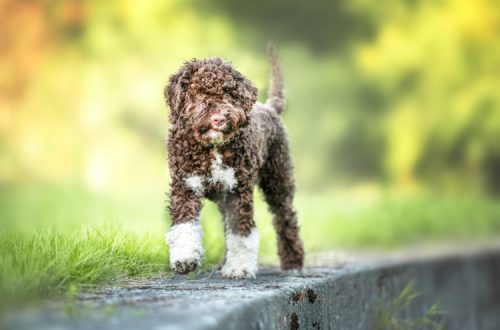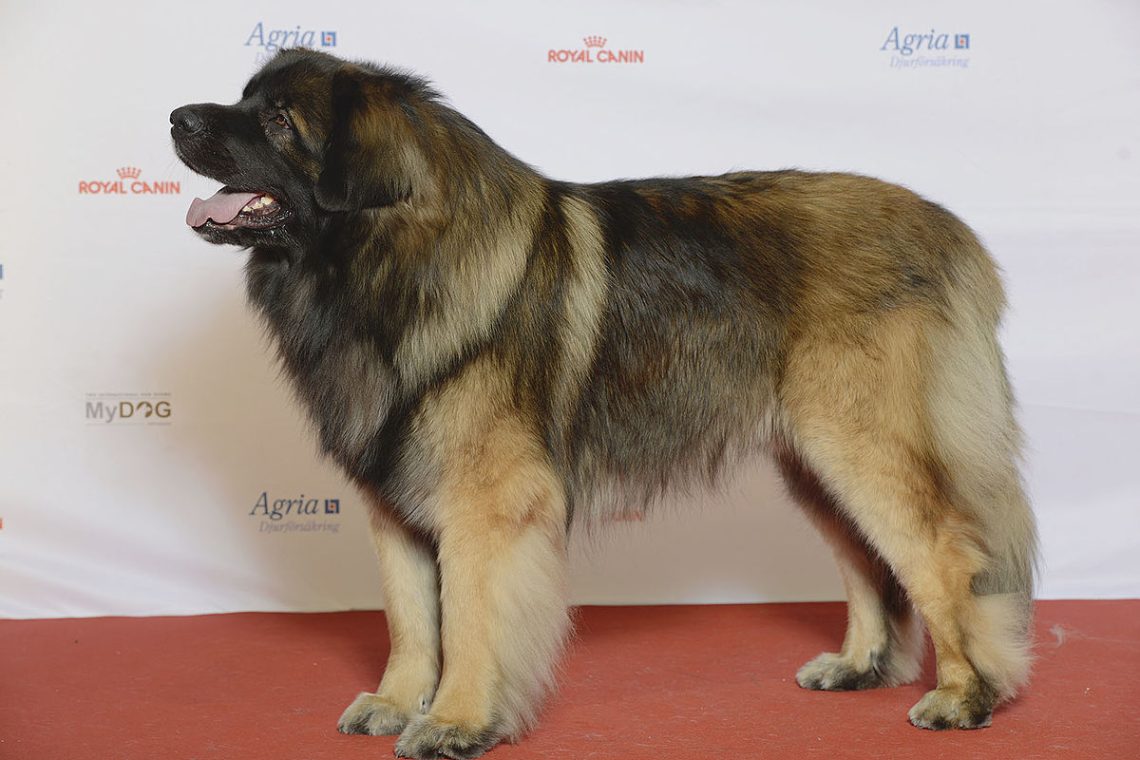
Leonberger
Other names: Leonberg
Leonberger is a breed of large shaggy dogs with a black mask on the muzzle, bred in one of the southwestern regions of Germany.
Contents
Characteristics of Leonberger
| Country of origin | Germany |
| The size | large |
| Growth | 65–80 cm |
| Weight | 34–50 kg |
| Age | 9–11 years old |
| FCI breed group | Pinschers and Schnauzers, Molossians, Mountain Dogs and Swiss Cattle Dogs |
Basic moments
- Leonbergers are relatively easy to train, but agility and other disciplines that involve honing obedience skills are not for them. At the same time, in drafting, animals can become serious competitors for other large dogs.
- The breed is famous for its good nature and sincere love for children, but this applies only to adults. Puppies are not so intelligent and in games they can be guided by the principles of a dog pack and bite the kids.
- The Leonberger is a wonderful companion and watchdog. He has a well-developed territorial instinct, so even the most seasoned lover of easy money will not be able to sneak past a dormant dog.
- In Germany of the 19th century, representatives of this breed were used as cheap draft power. Dogs transported small loads on light wooden carts, thereby saving the owner’s budget.
- Physically and psychologically, Leonbergers mature slowly, becoming fully mature individuals by 2-2.5 years.
- Leonbergers are family dogs that get the most out of socializing and playing. Due to the impressive size of the breed, suburban keeping is recommended, but putting its representatives on a chain, limiting contact with people, is strictly contraindicated.
- Unlike their counterparts in the section, leonbergers do not tend to excessive salivation. At the same time, if the dog is worried or passionately lusts for a cookie that you are eating before her eyes, “threads” flowing from the mouth are inevitable.
- Representatives of this breed are not annoyed by loud, harsh sounds, so feel free to turn on the recording of your favorite rock concert or learn the basics of working with a drum kit.
- Leonbergers are moderately restrained and never raise a commotion over trifles or out of mischief. If the dog barks, then something has happened that requires the owner’s intervention.
- The breed does not tolerate heat well, preferring to lie down in the shade on especially hot days. For this reason, in the summer, dogs are walked in the early morning or late evening.
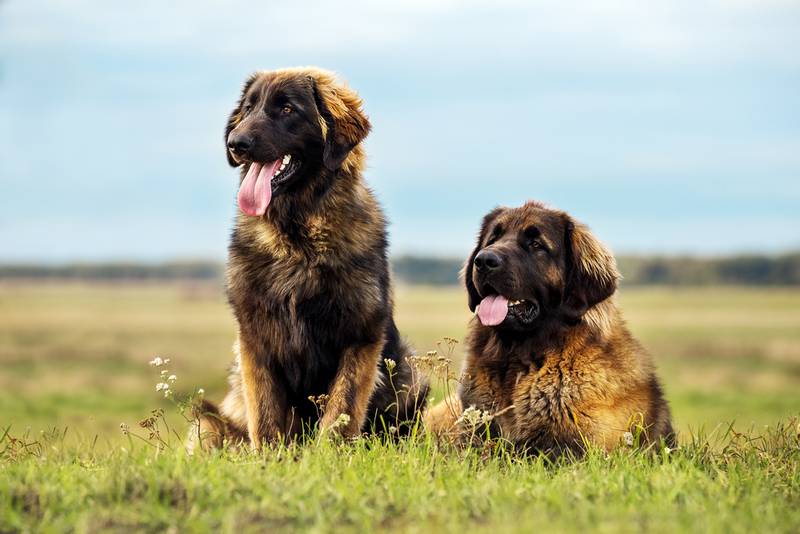
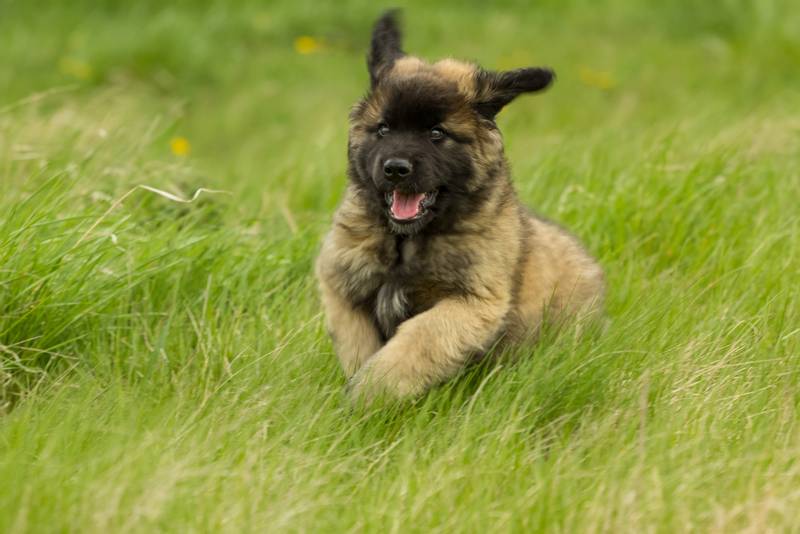
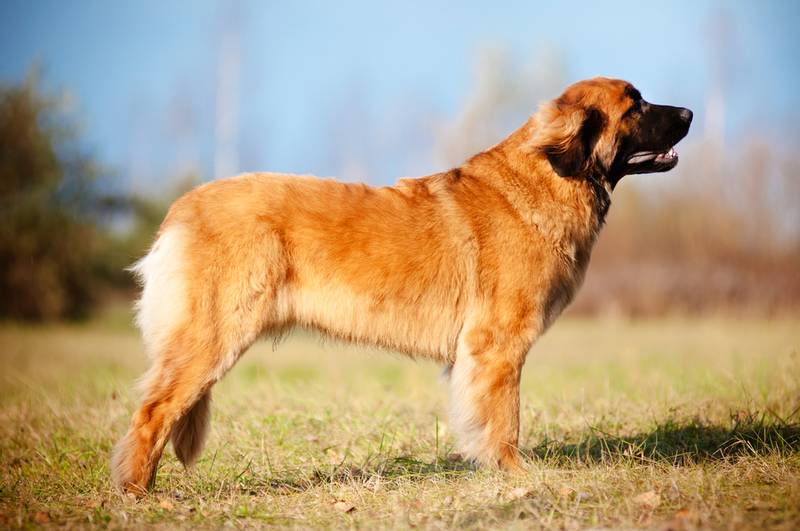
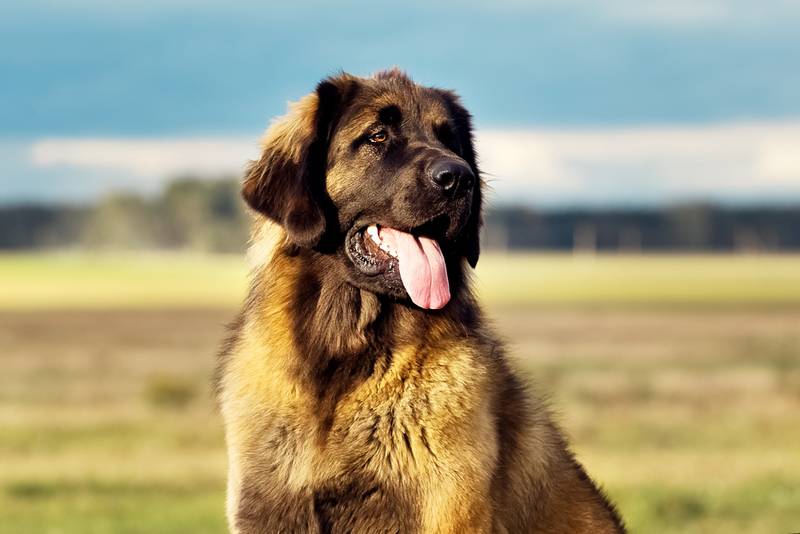
Leonberger is a large, but at the same time elegantly graceful handsome man who knows exactly how to win a place in the heart of the owner. He is calm and reasonable, as befits a purebred “German”, and certainly will never use his own strength against those who are weaker. Good-natured and playful, the Leonberger is sincerely glad to see guests whom he willingly meets at the door and sees off, delicately holding his coat with his teeth. At the same time, he manages to cope well with the work of a watchman, regally sitting on patrol and bringing to a pre-infarction state with his deaf, bass barking the most seasoned lovers of someone else’s good.
History of the Leonberger breed
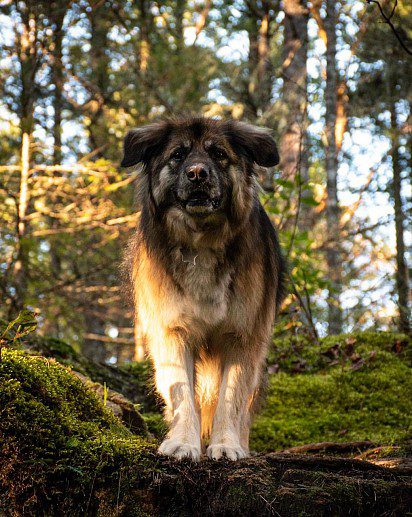
Leonberger is a breed that owes its origin to a German official, and the name to the city of Leonberg, in southwestern Germany. In any case, it was this version that was most widely used. Sometime between the 30s and 40s of the 19th century, the mayor of Leonberg, Heinrich Essig, set out to breed a completely new type of large dog. As conceived by the breeder, the breed was supposed to resemble the appearance of a mountain lion, which in turn was the heraldic symbol of the city.
Initially, a Newfoundland female and a St. Bernard male took part in the breeding experiments . A few years later, a Pyrenean mountain dog joined this “love duet”, making Essig the owner of a litter of several shaggy puppies with a silver-gray coat color and a black mask on their faces. This arrangement did not suit the breeder, so the experiments had to be continued. The Leonbergers eventually developed the warmer, leonine tones of the dog, with which they were recorded in 1848.
At some point, vanity and a thirst for financial gain spoke in Essig, therefore, without hesitation for a long time, the official began to promote his wards in aristocratic circles. So Leonbergers appeared at the court of Napoleon III, in the boudoir of the Austro-Hungarian Empress Sissi, in the mansion of Richard Wagner and other representatives of the beau monde. In less than ten years, the pets of the Swabian mayor turned out to be a highly sought-after commodity. Now, in order to acquire a shaggy lump from the nursery of the Leonberg mayor, I had to lay out a tidy sum.
Unfortunately, after his death in 1889, Heinrich Essig did not leave any intelligible description of the appearance of the Leonbergers, nor stud books, which gave impetus to the emergence of other interesting versions of the origin of animals. In particular, some experts argued that the Leonberger is not an independent breed, but simply a more pumped version of the ancient German Hovawarts, who were on the verge of extinction in the 19th century. As evidence, supporters of the theory even cited the names of several breeders of that time who were engaged in restoring the gene pool of endangered animals, which, as it turned out later, included the Leonberg mayor.
Video: Leonberger
Leonberger breed standard
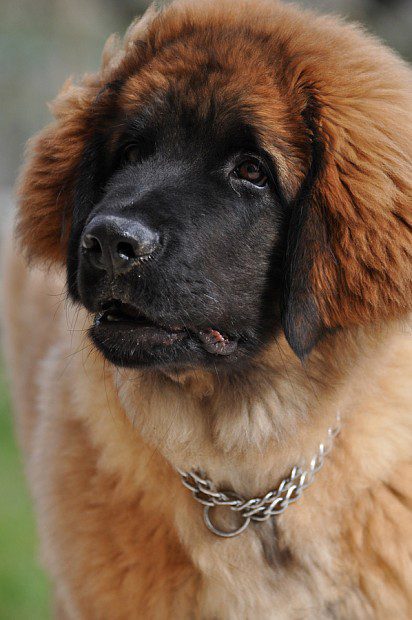
Leonberger is a broad-chested, shaggy XXL fluffy with a contrasting mask on the muzzle and a calm, sometimes a little distant look. Representatives of this breed are characterized by sexual dimorphism, so even a novice dog owner can distinguish a female from a male. So, for example, the “girls” have a less prominent withers, the “collar” and “panties” are poorer. In terms of dimensions, females are also inferior to males: the growth of the average “Leonberger” is 65 cm and much less often – 75 cm.
Head
The head of the Leonberger is massive, but without excessive weight, with a slightly domed skull and a clearly defined, moderate stop. The muzzle of the dog is long, but not sharp, with a characteristic hump – the so-called Roman profile.
Teeth and jaws
The breed Leonberger has a complete dentition (lack of M3 is not a fault) and strong, strong jaws with a scissor bite. A direct bite is also acceptable, although it is not considered a reference.
Nose
The nose of the dog is massive, of a standard black color.
Eyes
Leonbergers have light or dark brown oval eyes, set not too close, but not too far apart. The third eyelid in representatives of this breed is hidden, the white of the eyes is clean, white, without redness.
Ears
The fleshy, hanging ears of the Leonbergers are set high and close to the head.
Neck
Elongated, smoothly passing into the withers. There is no underbust or dewlap.

Frame
The Leonberger is harmoniously built and muscular. The back of the dog is wide, even, with prominent withers and a rounded, massive croup. The chest is oval in shape, spacious and deep, reaching to the elbows. The abdomen is slightly tucked up.
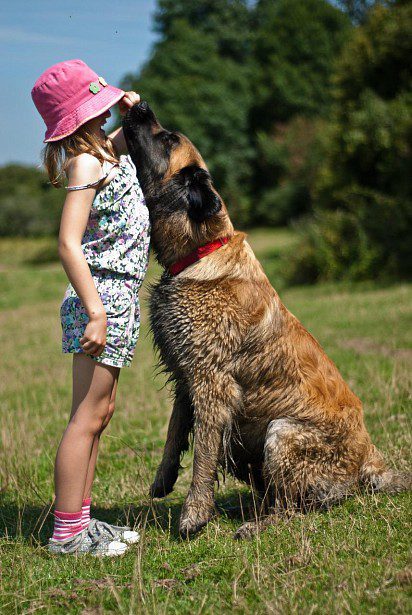
limbs
Legs of pedigree leonbergers are strong, set in parallel. The shoulder blades of dogs are long and sloping. The elbows are well pressed to the sides, the pasterns are springy, sheer when viewed in profile. The hind legs are characterized by elongated, dense femora, forming distinct angles with the lower legs. The hocks are strong and well angulated. All Leonbergers have rounded, tight-knit, straight-forward paws with black pads.
Tail
The tail of the dogs is well covered with dressing hair. In a static state, the tail is lowered; in a moving animal, it is slightly bent and raised (not higher than the back).
Wool
Leonbergers have a rich two-layer “fur coat”, consisting of a medium-soft or coarse dog and a fluffy, thick undercoat, giving the dogs a lion-like appearance. Areas with especially abundant decorating hair – neck, chest, thighs. There are thick feathers on the front legs.
Color
The Leonberger can come in six lion (yellow), sand, red and tawny colors. At the same time, a black mask is necessarily present on the muzzle of the dog. Another acceptable color option is a fawn or red coat with a black tip, provided that the blackening does not dominate the main tone. The standard does not exclude the presence of a white blaze on the chest, as well as light hairs on the paws.
Disqualifying vices
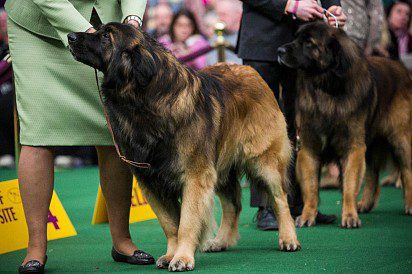
- Brown color of the nose, paw pads.
- No black mask on muzzle.
- Explicit anatomical deformities: back with a “saddle” or hunchbacked, legs in size, bovine posture of limbs.
- Tail “donut”.
- Any color of the iris, except light or dark brown.
- Curly or cord-like dog.
- A large area of areas with white hair (spots larger than the palm of the chest), as well as their presence where it is prohibited by the standard.
- Behavioral deviations from the standard: unreasonable aggression, timidity.
- Incomplete dental formula (with the exception of the absence of M3), bite deformities.
- Lip depigmentation.
Leonberger’s photo
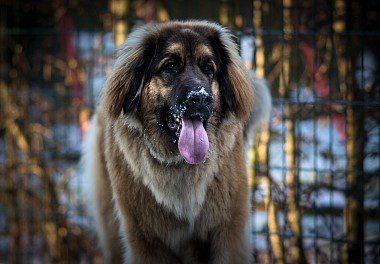
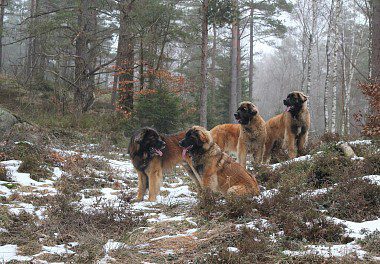
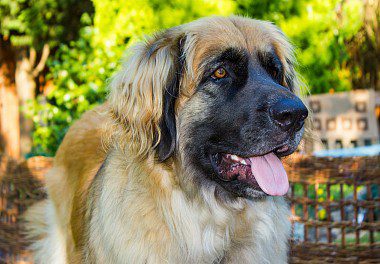

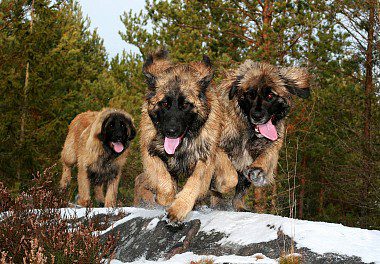
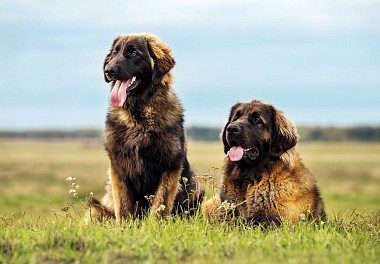
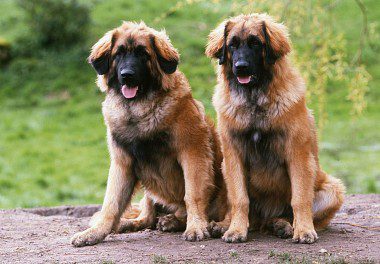
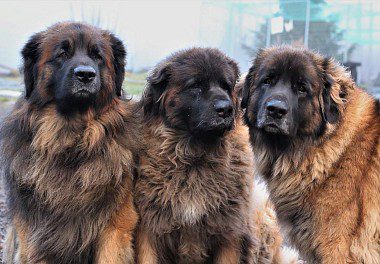
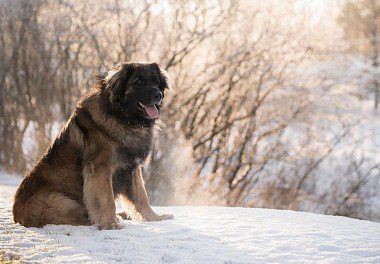
Leonberger character
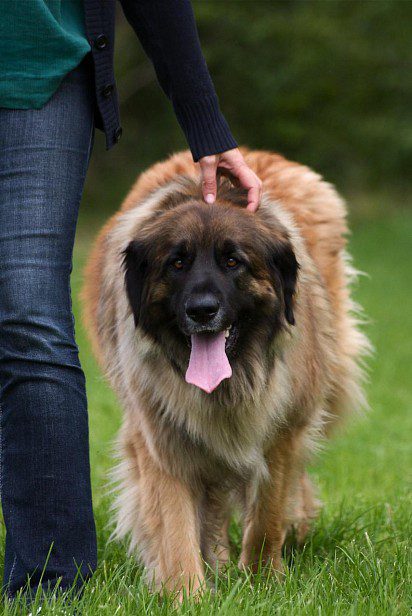
It is difficult to find a more accommodating and reasonable creature than the Leonberger. This shaggy good-natured man is perfectly aware of his own physical abilities, but will not even think of testing them on the owner or members of his family. At the same time, he is not cowardly and, if necessary, knows how to “bark” so that the desire to test the animal’s patience disappears completely. Despite the watchdog qualifications tacitly assigned to the breed, Leonbergers lack such qualities as excessive suspicion, viciousness and a desire to lead over everything that comes into view. Competing with the owner because of the status of an alpha male, as well as seeing a personal enemy in every two-legged creature, is not in the nature of the Leonbergers. Moreover, if a dog exhibits aggression and distrust that are not typical for the breed, this signals its mental illness.
In general, representatives of this breed are a little phlegmatic. Sometimes it seems that the patience of an animal is limitless, especially when you observe with what heroism it endures annoying childish harassment and pranks. Your heirs can turn the house upside down and arrange long concerts that burst eardrums – all this chaos will not cause the dog the slightest discomfort. However, such universal calm is demonstrated only in a narrow family circle. Although Leonberger does not feel hostility towards strangers, he is unlikely to get into friendship with them.
Relations with other animals in Leonbergers are quite good. They do not ruin the lives of cats and do not chase garbage rats with such zeal, as if their whole life depends on this prey. As for other dogs, shaggy giants are unlikely to provoke someone into a fight. On the other hand, much depends on the degree of upbringing of the pet. However, even the most obedient and humble “Leon” on occasion will easily rebuff the presumptuous provocateur.
Leonbergers need to constantly be in contact with people, although it is difficult to guess from the appearance of the dog. Sometimes it seems that these fluffy “clumps” only know what to withdraw into themselves and indulge in passive contemplation of what is happening around them. Do not believe this misleading impression: the Leonberger is an extremely sociable and sociable guy who will gladly exchange an afternoon rest on a mattress for your company.
Education and training
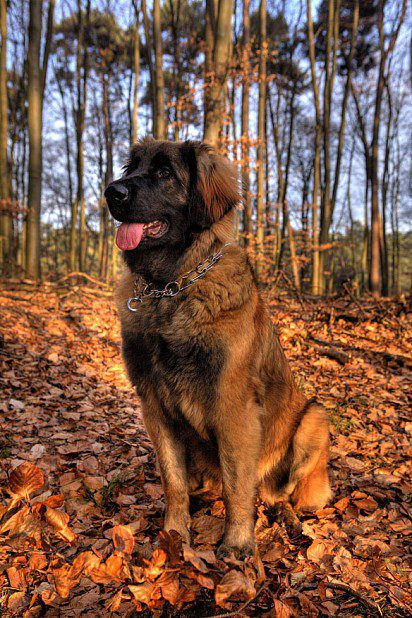
In training, Leonbergers, if not excellent students, then solid good ones. They are smart, obedient, willingly included in the work process. The only thing that somewhat slows down the training of the animal is its natural slowness (not to be confused with disobedience). Not a single Leonberger will rush at full speed to execute a command without carefully considering the expediency of the action. By the way, about teams: dog lovers are of the opinion that the breed does not need them in principle. You can control the behavior of a shaggy companion by changing the tone of the voice (higher-lower), affectionately, but persistently persuading him. Leonbergers are intuitive by nature and will quickly guess what they want from them by intonation.
Important: it is undesirable to take two Leonberger puppies into the house at once. Representatives of this breed are sociable guys who easily find contact with fellow tribesmen. As a result: in the “duet” of puppies that have become friends, the owner turns out to be the third wheel. Kids who are passionate about each other are immune to learning and training, so it will be extremely difficult to get them to engage. If there is no way without a second “leon” in the house, wait until the first pet socializes and begins to obey your requirements.
If you really want to, the dog can be taught to respond to commands, while it is important to understand that only the “Lie!” and “Stop!” Anything that requires a lot of effort and focus will be done in the style of “and so it will do.” For example, Leonbergers can sit on command, but this will not be an exemplary shepherd dog landing, but a relaxed lounging on their hind legs. The shaggy “heroes” are also not eager to import objects, so if you plan to teach the “leon” this trick, start training with him from 3-4 months of age. OKD for the breed is a serious test, and not all dogs stand it with honor. However, there are real virtuosos among the Leonbergers who are able to step on the throat of their own song in order to please the owner. It is these unique ones who compete in agility competitions.
Maintenance and care
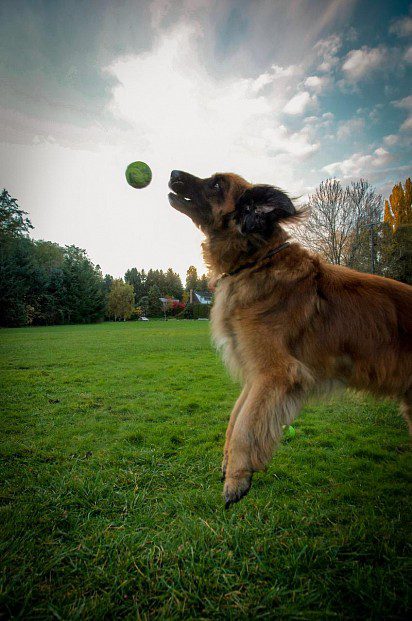
Leonberger, despite the outward detachment and phlegm, is a sociable and sensitive creature who needs to freely enter the house to communicate with family members. In general, keeping a Leonberger in a country cottage is considered the best option, which implies certain inconveniences for a person. In particular, the “Swabian lion cubs” are characterized by a great love for water. During walks, they are happy to wallow in puddles, after which they calmly carry kilograms of dirt into the house. What is there! Even to quench his thirst from a bowl of water “Leon” will be with such zeal, as if it were the last sip in his life. Result: local flood in the room after every drink.
In order to keep the house in relative order and once again not to get annoyed with the pet, it can be periodically resettled in the yard. Moreover, the booth and the aviary are not perceived by the fluffy giant as a sophisticated punishment. On the contrary, in the warm season, dogs prefer to cool off somewhere under a tree, climbing into the most shady corners of the yard. The ideal, from the point of view of the Leonberger himself, summer housing option is a cozy shed installed in the garden or on the backyard lawn, next to which there is a small pool (bath), where the dog can cool off a little.
It is more expedient to keep puppies brought from the kennel in the house for up to a year, so arrange a place for them in a draft-free corner. Remember that the skeletal system of a tiny Leonberger takes a long time to form and is difficult, so do not let the baby jump on slippery parquet and laminate. Cover the floors in the rooms with rugs and newspapers, or limit your pet’s access to that part of the house where you are not yet mentally ready to spoil the interior. Another construction dangerous for young Leonbergers is a ladder, and indeed any steps. Until a year old, it is better not to allow a puppy to go down from the porch on its own or climb onto the second floor of the cottage.
Walking and physical activity
Outwardly, Leonbergers seem to be strong men, but in practice, dogs cannot and do not want to work long and hard. This is especially true for puppies, whose activity must be carefully dosed. There can be no talk of any long walks, let alone jogging, until the “leon” is 1.5 years old. Well, so that the animal does not get bored from short promenades, do not cut circles along the same route. Change locations often, letting your baby off the leash in quiet places so that he can play explorer and get to know new objects, smells and phenomena.
Adults are more hardy, so you can go on long excursions with them. By the way, the activity of a mature dog is usually limited to walking, which is especially valuable for owners who do not have the opportunity to systematically train with a pet. Leonberger is supposed to walk twice a day, for about an hour. Well, in the summer, given the innate passion of the breed for water, the dog can be taken to the beach, allowing her to swim to her heart’s content. Just don’t go swimming late at night. The wool should have time to dry before the Leonberger goes to bed. Otherwise – hello, the unpleasant smell of dog, eczema and other “joys”.
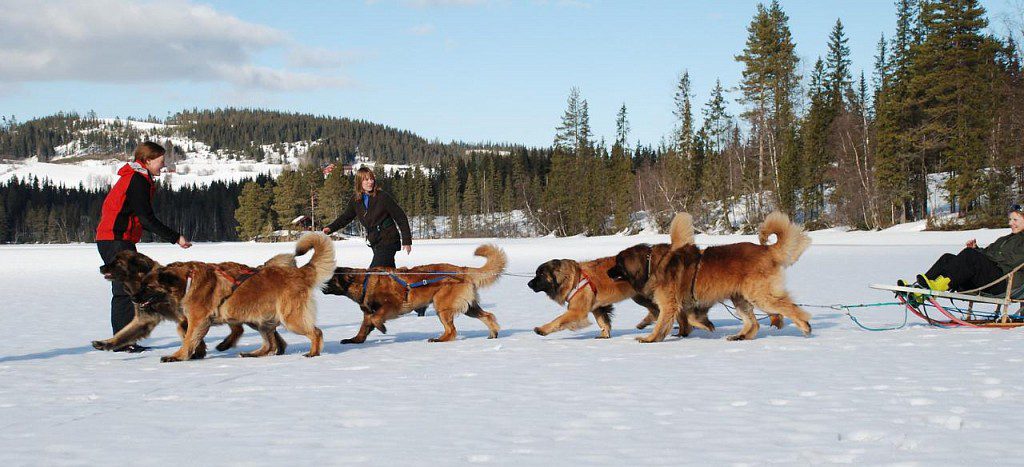
Hygiene
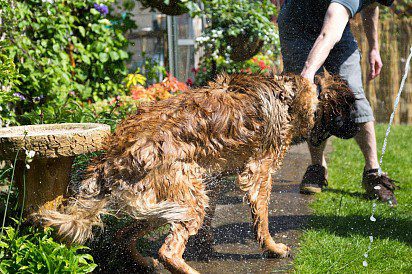
When acquiring a four-legged companion with such a luxurious “fur coat”, it is important to understand what scale of molting awaits you. For Leonbergers, the “hair fall” occurs twice a year and is very intense. However, individuals who live permanently in heated rooms may shed their hair little by little throughout the year. Since Leons are not supposed to be sheared and trimmed, shedding will have to be fought solely with combs (a metal comb and a massage brush to help). Combing the Leonberger “dry” is a bad idea, there is a risk of disturbing the structure of the coat and increasing the percentage of split hair. So do not be greedy and buy a professional conditioner designed to facilitate the procedure.
An interesting fact: Leonbergers living in enclosures and spending a lot of time on the street have thicker hair than their domestic counterparts.
It is recommended to wash animals as needed, but since no self-respecting Leonberger will pass by a puddle, it is not so rare to arrange sanitary days. Be sure to monitor the condition of the pet’s eyes, as they can turn sour in the “leons”. To avoid this unpleasant phenomenon, wipe the dog’s eyelids once a week with a cloth soaked in tea infusion or chamomile decoction. Leonberger’s ears, in addition to the standard cleaning of sulfur and dust particles, will also need airing. To do this, lift the ear cloth and work it like a fan, ensuring the flow of air into the auricle.
To care for the Leonberger’s claws, use a large breed dog nail cutter, and arm yourself with it at least once a month. Special attention – profitable fingers. The claws on them do not touch the ground, which means they do not wear off. Checking your teeth is another mandatory procedure. Plaque is easier to prevent than later walking with a four-legged friend to veterinary offices. Tomato juice, as well as hard vegetables like carrots, are good natural cleaners for Leonbergers. Dry kibbles of industrial feed also work as abrasives, brushing off everything superfluous from the teeth.
Feeding
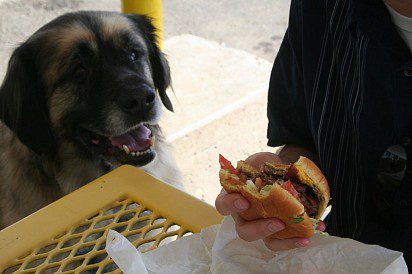
It is easy to suspect a glutton in a Leonberger, sweeping away everything that is in his bowl with lightning speed. In fact, the breed is distinguished by a slow metabolism, due to which dogs treat food without exaggerated delight (there are also exceptions). Do not take this behavior as something out of the ordinary and do not try to feed your pet with treats to arouse his interest in food. Extra weight for Leonbergers is absolutely useless, especially for puppies who have too vulnerable bones. It is better to reconsider the diet and food volumes: it is possible that your and the dog’s vision of the size of a normal portion simply do not match.
Sometimes, in order to stimulate the Leonberger’s appetite, it is enough to let him watch a cat gobble up his canned food. In such cases, the spirit of competition works real miracles. If the dog, on the contrary, gives the impression of being forever hungry and does not hesitate to rummage through the trash can, something is clearly wrong with it. It is possible that the pet’s body is infected with worms, but in any case, one cannot do without consulting a veterinarian.
Leonberger’s daily menu consists of meat (lean varieties and trimmings), fish (only sea and only in the form of fillets), vegetable salads (cabbage + carrots + unrefined vegetable oil), buckwheat and rice porridge (no more than 20% of the main diet ) and dairy products. Banned: any “human” food, from sausages to confectionery. It is better to feed both a puppy and an adult dog from a stand, because, due to the anatomical features of the structure, tilting to the ground while eating leads to distension of the stomach in Leonbergers.
Leonberger health and disease
In Russia, the breeding of the breed is carried out under the vigilant control of the cynological federation. In particular, in order for a female and male Leonberger to be admitted to mating, one pedigree of the RKF will not be enough. You will have to attach to it the results of a couple’s examination for dysplasia, as well as a certificate with honor passed kerung (a test for establishing the type of temperament). It is thanks to such strict selection criteria that domestic Leonbergers do not have serious health problems. Nevertheless, it is worth calmly accepting the fact that the diseases typical of large dogs have not bypassed the breed. So, for example, at different stages of life, eosinophilic osteomyelitis (inflammation of bone tissue), Addison’s disease, osteosarcoma, entropy or ectropion of the eye, as well as the notorious joint dysplasia, can be detected in Leonberger.
How to choose a puppy
- Over the past decade, Russian kennels have come a long way in terms of the quality of the Leonberger breeding base. Nevertheless, it is better not to hope for a lucky break and periodically attend breed shows, where it is easier to get to know highly qualified breeders.
- The weight of a healthy newborn puppy is about half a kilogram. By the 40th day of life – ten times more. Consider this if you are taking a 45-day-old baby (it is at this age that they begin to distribute).
- Examine the puppy carefully. A healthy Leonberger should be plump, fluffy and cheerful. Particular attention – the color of the eyelids of the crumbs. If the mucosa is pale pink, the animal is likely to have anemia.
- 40-day-old Leonbergers should be able to lap well from a bowl. To verify this, visit the nursery during litter feeding hours.
- If you encounter the breed for the first time, check with the breeder if he is ready to provide you with advisory support for the first time.
Photos of Leonberger puppies
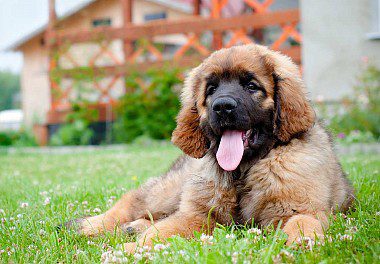
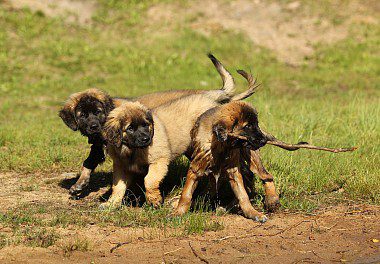
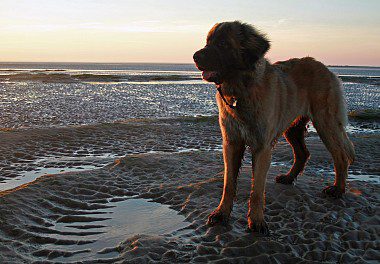
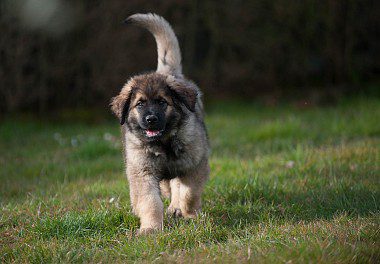
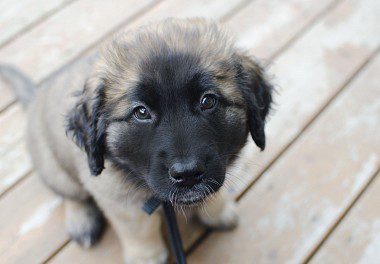
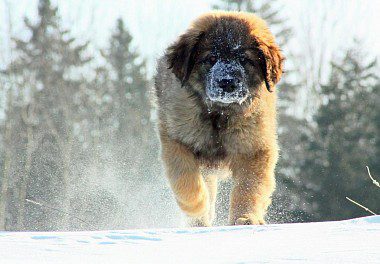
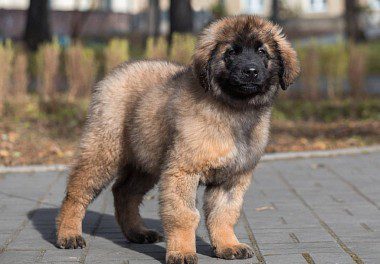
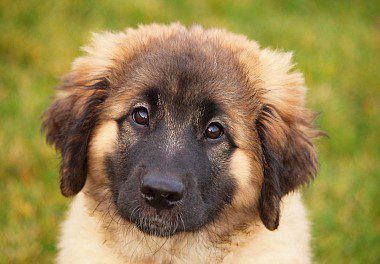

Leonberger price
Leonbergers are a relatively scarce commodity, with a corresponding cost. For example, in domestic kennels, prices for puppies start at 800$ and end in the region of 1500 – 2000$. The maximum price tag is set for the offspring of winners of European and world exhibitions, so if you want to amuse your own vanity and brag to your friends, it makes sense to overpay. Leonberger puppies from producers with local diplomas will cost an order of magnitude cheaper, which does not prevent them from surpassing their own parents in the future and getting the title of interchampion.




